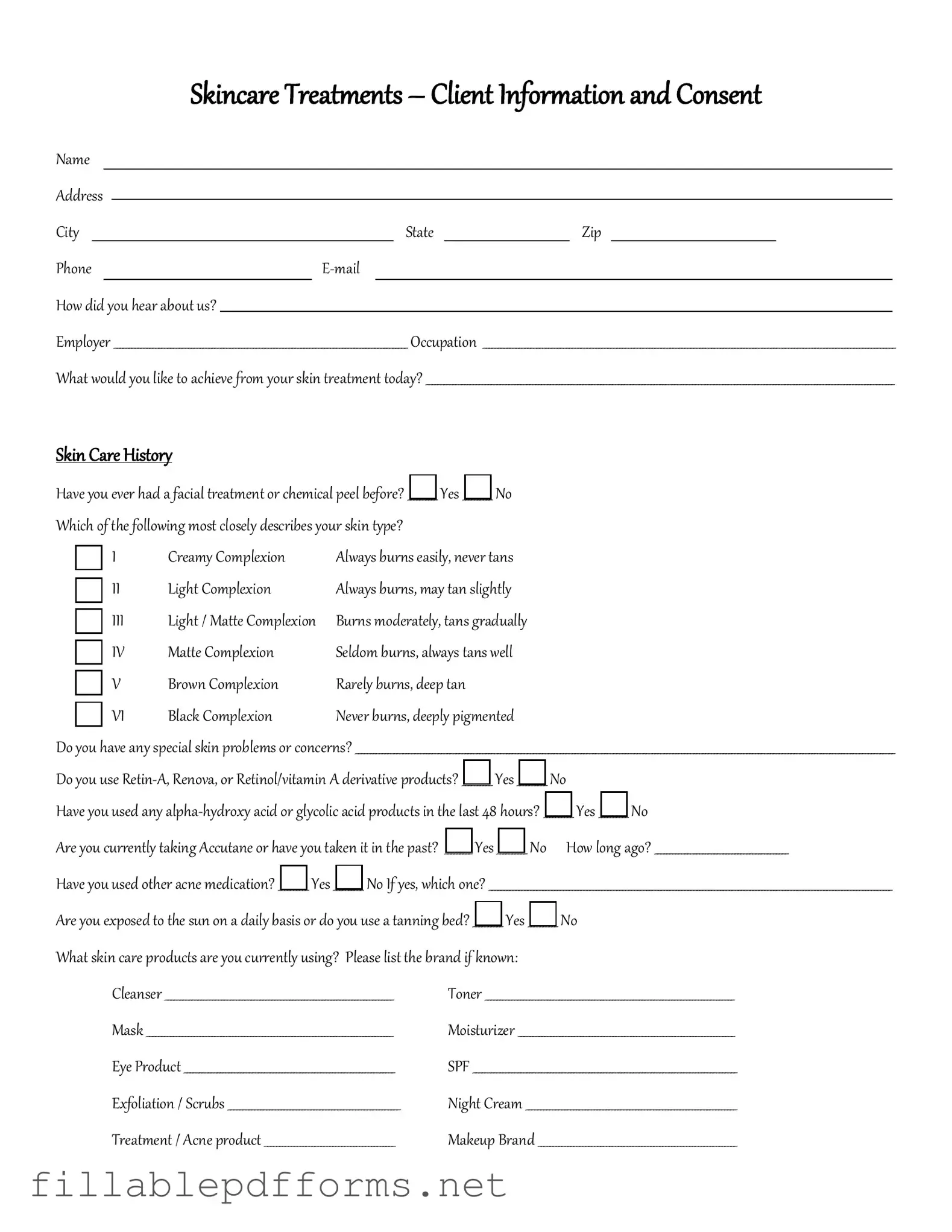In the world of skincare and beauty treatments, the Facial Consent form plays a crucial role in ensuring that clients are well-informed and comfortable with the procedures they are about to undergo. This form serves as a key document that outlines the specifics of the facial treatment, including the types of products used, potential risks, and expected outcomes. Clients are asked to provide their medical history, which helps practitioners identify any allergies or conditions that may affect the treatment. Additionally, the form typically includes a section for clients to give their explicit consent, acknowledging that they understand the information presented and agree to proceed. By addressing these essential elements, the Facial Consent form not only protects the practitioner legally but also fosters trust and transparency between the client and the service provider. Understanding the importance of this form is vital for anyone considering facial treatments, as it lays the groundwork for a safe and effective experience.
